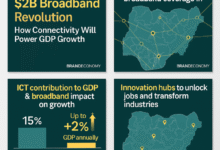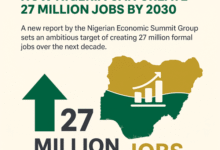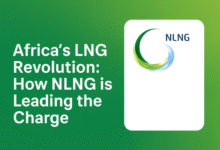Nigeria’s Manufacturing Sector Struggles with Inflation, High Costs in H2 2024 – MAN Report

Nigeria’s manufacturing sector saw marginal improvements in capacity and local sourcing, but rising inflation, weak consumer demand, and volatile energy costs continued to erode profitability and investor confidence in the second half of 2024.
That’s according to the latest H2 2024 Economic Review released by the Manufacturers Association of Nigeria (MAN) on Monday. The report paints a complex picture: slow gains in productivity, higher use of local raw materials, but a worrying surge in unsold inventory, energy costs, and finance burdens.
“The data shows mixed performance across key manufacturing indicators — growth is still happening, but it’s sluggish and fragile,” said Segun Ajayi-Kadir, Director-General of MAN.
Key Indicators at a Glance
| Metric | 2024 Performance |
| Capacity Utilisation | 57.0% (↑ from 55.1% in 2023) |
| Real Output | ₦7.78 trillion (↑1.7% YoY) |
| Nominal Output | ₦33.43 trillion (↑34.9%) |
| Local Raw Material Use | 57.1% (↑ from 52.0%) |
| Inventory of Unsold Goods | ₦2.14 trillion (↑87.5%) |
| Manufacturing Investment | ₦658.81 billion (↓35.3%) |
| Energy Spend (Alt. Sources) | ₦1.11 trillion (↑42.3%) |
| Lending Rates | 35.5% (↑ from 28.1%) |
🔄 Slight Recovery in Productivity, But Real Growth Remains Elusive
While capacity utilisation edged up to 57.0%, and real output grew by 1.7% year-on-year, these improvements were not enough to outpace rising production costs and weak demand. A half-year analysis revealed a 3.1% drop in real output between H1 and H2 2024.
High inflation drove a 34.9% jump in nominal output to ₦33.43 trillion, underscoring a widening gap between value creation and real consumer purchasing power.
“Most of the gains came from sectors like motor vehicle assembly, non-metallic minerals, and electronics — but that momentum was offset by inflation and foreign exchange volatility,” Ajayi-Kadir noted.
Local Sourcing Gains Ground as FX Crunch Bites
In a positive development, local sourcing of raw materials rose to 57.1%, up from 52% in 2023. This was largely fueled by scarcity of foreign exchange, high import costs, and government incentives promoting backward integration.
Sectors such as wood products, textiles, chemicals, and pharmaceuticals led the charge, while electronics continued to lag due to import reliance.
Inventory Pile-Up Signals Consumer Distress
One of the most concerning figures was the 87.5% spike in unsold goods, now totalling ₦2.14 trillion. This reflects a manufacturing sector producing more than the market can absorb, primarily due to:
- Eroded consumer spending
- High inflation
- Price-sensitive markets
Though a 27.9% drop in unsold goods in H2 vs H1 2024 suggests some clearance through discounting and improved distribution, it is not yet a trend reversal.
📉 Investment Contracts Sharply as Business Confidence Wanes
Real investment in manufacturing plummeted by 35.3% year-on-year to ₦658.81 billion, a clear signal of cautious spending and delayed expansion. Still, the sector witnessed a 19.4% rebound in H2, hinting at selective optimism amid policy adjustments.
⚡ Energy Supply Improves, But So Do Tariffs
Electricity supply rose to an average of 13.3 hours per day in 2024, up from 10.6 hours in 2023, with 15.2 hours per day in H2 alone. However, this was offset by a 200% surge in tariffs for Band A consumers, leading manufacturers to fall back heavily on alternative energy sources.
Total spend on diesel, fuel, and other alternatives soared 42.3% to ₦1.11 trillion, with a 75% jump between H1 and H2.
“Power reliability improved, but affordability declined — and that’s a big red flag,” noted one BRANDECONOMY analyst.
Lending Rates Climb, Finance Costs Hit ₦1.3 Trillion
With commercial bank lending rates hitting 35.5%, finance costs became a major drag on the sector. Total interest-related expenses reached ₦1.3 trillion, limiting manufacturers’ ability to invest or scale operations.
Jobs Stable but Labour Churn Continues
The manufacturing sector added 34,769 jobs in 2024, a slight increase from the previous year. However, employee exits also rose — from 17,364 to 17,949 — indicating ongoing labour churn, skills migration, and restructuring.
🔎 BRANDECONOMY Insight: What This Means for the Sector
The MAN report underscores a resilient but constrained sector. While there are sparks of progress in localisation, electricity supply, and sector-specific recoveries, the broader ecosystem remains hamstrung by:
- Inflationary pressures
- High cost of capital
- FX instability
- Low consumer confidence
Without targeted policy relief, stable FX, and improved access to credit, Nigeria’s industrial ambitions may continue to face uphill battles.
📌 Next Steps for Stakeholders
- Government: Must prioritise electricity reform, local content incentives, and access to affordable financing.
- Manufacturers: Need to double down on lean operations, innovation, and new market strategies.
- Investors: Should monitor sectors showing resilience — especially automotive assembly, pharmaceuticals, and agro-processing.
📢 Stay with BRANDECONOMY for exclusive manufacturing, industry, and real sector intelligence. Subscribe to our weekly newsletter for deeper insights into Nigeria’s industrial economy.











